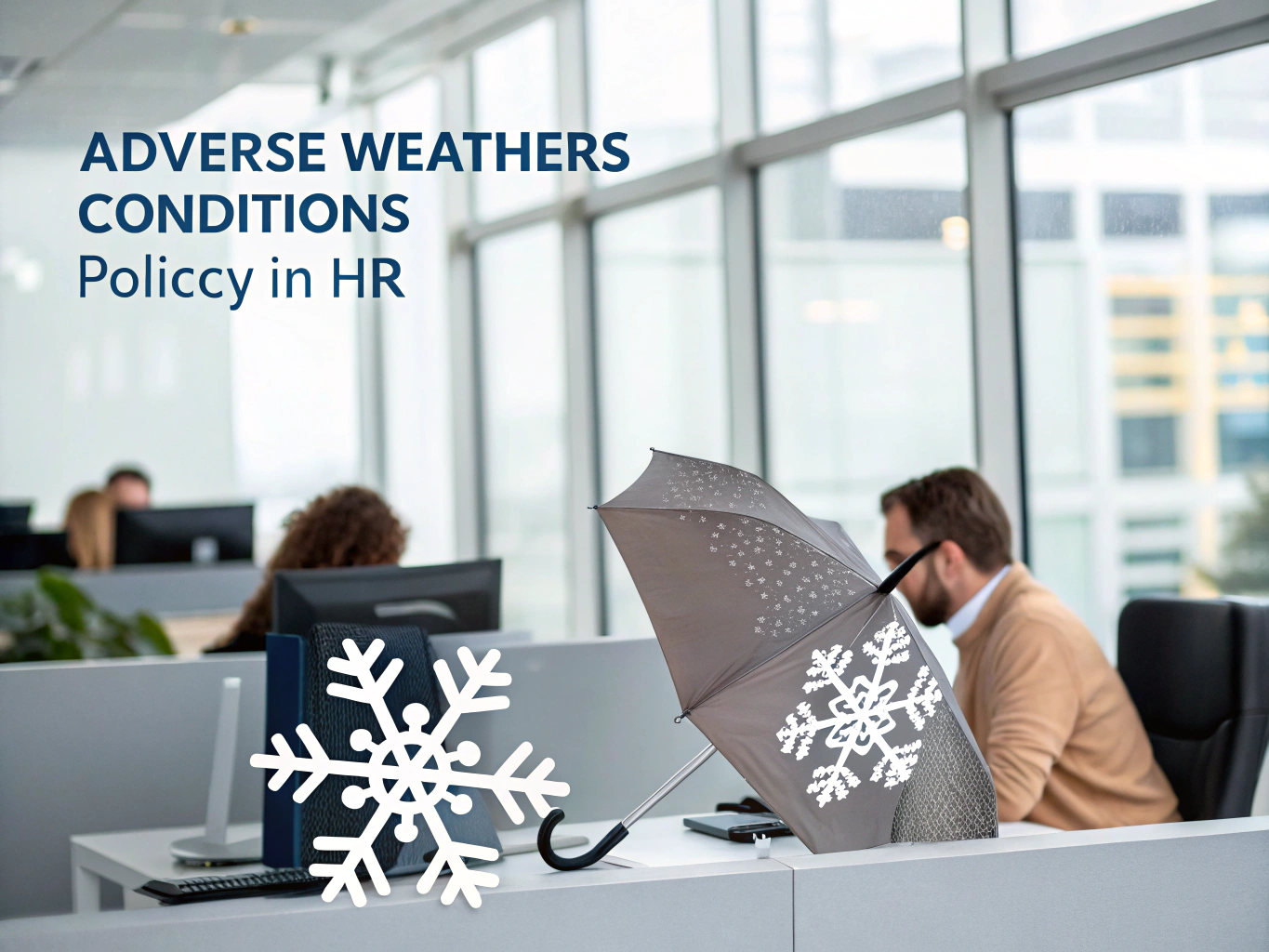Definition
An Adverse Weather Conditions Policy is a set of guidelines designed to help both employees and management navigate the challenges posed by severe weather events. Whether it’s snowstorms, hurricanes, or heavy rain, this policy prioritizes safety while ensuring that business operations can continue as smoothly as possible.
Key Components
Understanding the main elements of an Adverse Weather Conditions Policy is essential for creating a safe and efficient work environment. Here are the key components that you should consider:
- Safety First: The core of any adverse weather policy is the well-being of employees. Encourage your team to assess their safety first and foremost—traveling to work should only be done if it’s safe to do so.
- Clear Communication: Establish a communication line for employees to report their situations promptly. For instance, if a snowstorm is expected, employees should inform their supervisors about their ability to make it to work, fostering transparency and trust.
- Flexible Work Arrangements: Provide options like remote work, flexible hours, or paid leave during adverse weather. For example, if heavy rain makes commuting risky, allow employees to work from home and maintain productivity.
- Emergency Closure Procedures: Clearly outline how and when the company will close its facilities. Ensure employees know how they’ll receive updates, whether through text, email, or other channels.
- Essential Staff Designation: Identify roles that are critical during severe weather and communicate expectations to those employees in advance. This way, everyone knows who needs to report to work and under what conditions.
- Monitoring and Updates: Management should actively monitor weather forecasts and keep employees informed about changes in work arrangements or office status. Regular updates can alleviate anxiety and confusion in uncertain conditions.
Importance in the Workplace
Why does having an Adverse Weather Conditions Policy matter? Picture this: a sudden snowstorm hits just as employees are heading to work. Without a plan, chaos might ensue. Employees could risk their safety trying to commute, leading to possible accidents and injuries. On the flip side, with a clear policy in place, everyone knows what to do. Employees are encouraged to stay home if traveling is unsafe, minimizing risk while ensuring that business operations can either adapt or continue remotely. This not only safeguards staff but also protects your organization’s reputation and operational efficiency.
Best Practices
Implementing an effective Adverse Weather Conditions Policy requires careful planning and execution. Here are some best practices to help you get started:
- Regular Training: Conduct training sessions to ensure all employees understand the policy and their roles during adverse weather. Role-playing scenarios can help everyone feel prepared.
- Use Technology: Leverage tools like group messaging apps or automated alerts to quickly communicate important updates about weather conditions or office closures.
- Gather Feedback: After a weather event, solicit feedback from employees about the policy’s effectiveness. This can help you identify areas for improvement and make adjustments for future situations.
- Documentation: Keep a record of all communications regarding weather-related decisions. This documentation can be invaluable for future reference and compliance purposes.
- Review and Revise: Set a routine for reviewing and updating the policy annually or after each significant weather event to ensure it remains relevant and effective.
Legal Considerations
When drafting an Adverse Weather Conditions Policy, it’s crucial to consider legal implications. Familiarize yourself with local labor laws regarding employee rights to safety and pay during inclement weather. For instance, some jurisdictions may require companies to compensate employees who are unable to work due to weather-related closures. Consult with legal experts to ensure your policy complies with all applicable regulations and protects both the employees and the company.
Conclusion
In a world where weather events can be unpredictable, having a robust Adverse Weather Conditions Policy is not just a nice-to-have; it’s essential for ensuring the safety and productivity of your workforce. By prioritizing safety, maintaining clear communication, and providing flexible work options, you can create a supportive environment that empowers employees to handle adverse conditions confidently. Remember, a well-prepared workplace not only protects employees but also fosters a culture of care and responsibility.




